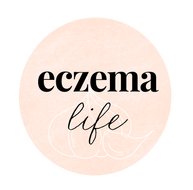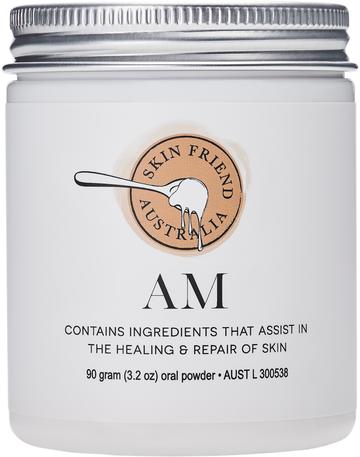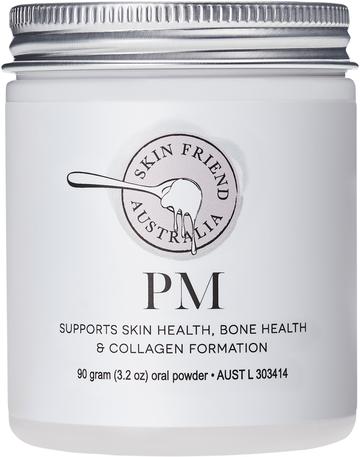Top 5 Lunchbox Foods to Avoid if you have Eczema

When your child has eczema, packing their school lunchbox can be a little tricky. Many typical lunchbox items can trigger itchy skin (or make it worse) and concentrating in class can become a challenge. School children with eczema are often self-conscious about their flakey, rash-covered skin and may avoid sporting activities or resort to wearing long-sleeved winter clothes in the heat of summer in order to hide their skin.
Parents often ask how they can help their child feel more comfortable at school. One way is to avoid packing "flare-up" foods in their lunchbox as this helps to minimise the risk of flare-ups during class.
Here are the top 5 lunchbox items to avoid, from The Eczema Diet, and some eczema-friendly alternatives.
1. Margarine (on their sandwiches)
Margarines are made from vegetable oils and have been touted as a healthy alternative to butter but research is emerging to suggest otherwise. According to a large cross-sectional study in Germany, families who predominantly use margarine (as opposed to butter) are more likely to have children who develop eczema by age two.
While genetics play a role in the appearance of eczema, the same researchers found that frequent consumption of vegetable oils, margarine or frying fats during the last four weeks of pregnancy significantly increases the risk of having a child who develops eczema by age two.
Why is margarine bad for eczema?
- According to research from the RPA Hospital allergy unit, more than 40% of eczema sufferers react to artificial colours,
- antioxidants BHA/320 and 319 also trigger eczema symptoms in 21% of people with eczema, and
- food preservatives cause a worsening of eczema symptoms in more than 50% of eczema sufferers.
If you look at the ingredient panel of most margarine tubs you'll see they contain colourings, antioxidants BHA/320 or 319 (which are artificial) and preservative 202 - three ingredients that trigger eczema flare-ups.
Margarines can also contain trans fats which are damaged fats that can worsen eczema symptoms. Some manufacturers are now producing margarines that are virtually trans fat free. But there is another problem with margarines: they are rich in omega-6 fatty acids. Eczema sufferers often can’t process omega-6 correctly so the fatty acids become pro-inflammatory and form leukotrienes which create eczema.
- In the 1930s researchers initially thought that omega-6 was deficient in eczema sufferers. However, research published in the 1980s confirmed the opposite: eczema sufferers tend to have elevated omega-6 in their blood and adipose tissue, in conjunction with a decrease in omega-6 metabolites such as DGLA (dihomogamma-linolenic acid), which is anti-inflammatory.
- When the milk of nursing mothers was tested, those with elevated levels of omega-6 and low levels of DGLA in their milk had children who later went on to develop eczema. (So the faulty fat metabolism came before the appearance of eczema, however dietary changes can compensate for this problem.)
The verdict: spreading margarine may spread eczema. It is best to avoid spreads but if you need to, a tiny amount of pure butter is fine if you are not allergic to dairy. A skin prick test prescribed by your doctor is the best way to diagnose dairy allergy.
Pure butters in Australia include Just Organic butter (from Aldi) and Mainland Buttersoft (salt-reduced is always best). If choosing butter avoid brands that contain any kind of additives, annatto/160b and vegetable oils.
2. Most fruits, especially dried fruits, grapes, kiwi fruit, oranges and strawberries
While dried fruits might be touted as a healthy snack for children, one dried apricot contains around 16mg of sulphur dioxide, a sulfite food preservative. Sulfites destroy vitamin B1 and folic acid in foods so they can be considered an ‘anti-nutrient’. Sulfites also trigger eczema flare-ups and asthma attacks in those susceptible to eczema or asthma.
Most dried fruits contain added sulfites but there are a few that don't: dates, sultanas, raisins and prunes are sulfite-free but unfortunately they are very rich sources of both salicylates and amines, which worsen eczema symptoms.
Many fresh fruits, especially grapes, kiwi fruit, oranges, avocado, plums, mandarins, passionfruit, pineapple and strawberries, contain high levels of salicylates, amines and other natural chemicals that trigger flare-ups.
The verdict: fruit is not totally off the menu, eczema-friendly alternatives are pear, pawpaw, papaya and banana (banana contains amines). Peeled apples are fine in moderation and the best ones are golden and red delicious as they are lower in salicylates than other varieties.
3. Dairy Products
Dairy products including cow’s milk, flavoured milks, cheese and yoghurts are common lunchbox items but they could be making your child itchy at school, and here’s why…
- according to Australian researchers Loblay and Swain, 38% of eczema sufferers are allergic to dairy (diagnosed by a skin prick test), and
- 40% of eczema sufferers are sensitive to lactose and they experience a worsening of eczema symptoms and/or diarrhoea, gas, cramps and/or bloating when they eat dairy products.
It’s not only the allergy-prone who are suffering: dairy products can worsen eczema symptoms even when an allergy is not present. Dairy products contain a range of animal hormones and supplies arachidonic acid which can worsen the itch of eczema and make it hard for a child to concentrate in class.
When natural is not best for eczema ...
Many brands of butter and yoghurts, including yoghurts made for children, often contain a natural colouring called annatto which can be listed as 160b or “natural colouring” on the ingredients panel. However annatto should be avoided as it can cause eczema flare-ups and other documented adverse reactions including skin rashes, obsessive head banging, irritable bowel syndrome, headaches and learning difficulties in sensitive individuals.
The facts on annatto:
- In Europe annatto has been banned from use in foods and a safe alternative, beta-carotene (160a), is used,
- annatto can be found in plenty of yellow foods and desserts in Australian supermarkets, however as the negative research on annatto is spreading, alternative colourings including betacarotene are gradually gaining popularity.
The verdict: Make the lunchbox dairy-free for at least 12 weeks and use eczema-friendly alternatives such as organic soy milk or rice milk, and additive-free vanilla soy yoghurt if you are not allergic to soy or rice.
A note on butter: If your child has undergone allergy testing and is absolutely not allergic to dairy products then a small amount of butter may be used on their sandwiches. However, the butter must be pure and free from vegetable oils, preservatives and 160b etc (organic might be the best choice). See notes on Margarine, above.
4. Fruit juice (any type)
Besides the risk of causing cavities in their teeth, children with eczema or asthma should avoid drinking fruit juice. Fruit juices can trigger eczema flare-ups and asthma attacks in kids who are prone to eczema and asthma, and here's why ...
Mixed juices containing grape juice are especially problematic as they contain three itch-promoting chemicals: salicylates, MSG and amines. However any type of juice can give your child a maddening itch because all juices are rich in salicylates. (there is more information on these chemicals throughout the eczemalife.com blog).
The verdict: skip the juice Poppas and pack a water bottle in their eczema-friendly lunchbox instead. Filtered water is fantastic for the skin and for your child's overall health. Brita water filter jugs are an inexpensive way to filter tap water.
5. Junk food
Chocolates, flavoured chips, soft drink, and fruit sticks, to name a few, are junk foods that can increase the itch of eczema. Junk food can also cause eczema, depending on the ingredients, and here's why ...
- Research by New Zealand scientists showed children who eat fast food three or more times a week are significantly more likely than other children to develop severe eczema.
The researchers from Auckland University in New Zealand used international data compiled from almost two million children and adolescents. They also discovered that young children who consumed at least three fast food meals a week were 27% more likely to develop severe asthma, and teenagers were 39% more likely to develop severe asthma, compared with children who ate fewer or no fast food meals each week.
It is believed that the high content of fats, refined salts and sugars, trans fatty acids, chemical preservatives and other artificial additives in take away foods contribute to the appearance of eczema, asthma and hay fever.
- The same researchers found teenagers who ate three or more servings of vegetables saw an 11% symptom reduction, while young children saw a 14% reduction.
- Meat pies and sausage rolls contain carcinogenic nitrates which worsen eczema symptoms in 43% of people with eczema.
- Chewing gum and 'sugar free' sweets contain aspartame artificial sweetener which can trigger itchy skin.
- According to Australian research, tartrazine (102), used to colour lollies (sweets) and many other yellow junk foods, worsens eczema symptoms in 40% of eczema sufferers.
Tartrazine in foods can worsen eczema symptoms as it stimulates the production of pro-inflammatory leukotrienes. Leukotrienes are known to trigger eczema, psoriasis, asthma attacks, runny nose, purplish skin bruising and in severe cases anaphylactic shock.
The verdict: You can help to minimise itchiness during school by avoiding the foods your child may be sensitive or allergic to. Always check the label to see if a product is free from artificial colours, flavours, and preservatives and if a food or beverage triggers an adverse reaction make your own eczema-friendly alternatives.
|
Additives to avoid |
Food sources |
|
flavour enhancers: glutamates, monosodium glutamate (MSG), 620-635 |
canned soups, flavoured noodles, chicken-salted chips, flavoured crackers and crisps, sauces, stock cubes, gravies, fast foods, traditional Chinese cooking (natural sources of MSG include tomato, soy sauce, broccoli, mushrooms, spinach, grapes, plums, deli meats, miso, tempeh, wine, rum, sherry, brandy, liqueur). |
|
artificial colourings: tartrazine (yellow), red, blue, green, black, brown, 102, 104, 107, 110, 122–129, 132, 133, 142, 151, 155 USA: blue 1 and 2, green 3, red 2, 3, 4, red 40, yellow 5, yellow 6 natural colouring: 160b (annatto), "natural colouring" |
confectionery/lollies/candy, jelly, breakfast cereals, glacé cherries, salmon, hot dogs, soft drinks, flavoured mineral water, chocolate, potato crisps, corn chips, toppings, ice-cream, iceblocks (popsicles/ice lollies), fruit drinks, cordials, flavoured milks, meat pies, cupcakes, cakes, liqueur, chewing gum, bubblegum, yoghurt and dairy snacks Annatto is in many yoghurts, some margarines, some brands of butter, fish fingers, custard and commercial desserts (160a/beta-carotene is a safer alternative) |
|
Artificial sweeteners (all kinds) including aspartame
|
"sugar-free" sweets, diet softdrinks, sugar-free soft drinks, diet cordial, sugar-free cordials, chewing gum, bubblegum and any sweet food that is "sugar-free"
|
Sample lunchbox menu

Additional lunchbox menus can be found in The Eczema Diet.
NOTE: Karen's latest book The Eczema Detox is now released and contains the most updated information on following a low chemical diet for eczema. To read further on the difference between the 2 books, click here
Fischer, Karen, 2014, 'Top 5 Lunchbox Foods to Avoid if you have Eczema', www.skinfriend.com
READ MORE:
The Itchy Dozen Worst Foods for Eczema
What is the difference between eczema and dermatitis?
Eczema and MSG Sensitivity
References: Fischer, K, 2014, The Eczema Diet, Second Edition; Loblay, R.H. and Swain, A.R., 2006, ‘Food Intolerance’, Recent Advances in Clinical Nutrition; Sausenthaler, S., et al., 2007, ‘Maternal diet during pregnancy in relation to eczema and allergic sensitization in the offspring at 2 years of age’, American Journal of Clinical Nutrition; Bolte, G, et al., 2001, ‘Margarine consumption and allergy in children’, American Journal of Respiratory and Critical Care Medicine.
Products
At Eczema Life, we recommend nutritionist Karen Fischer's low food chemical program (The Eczema Detox) along with additive-free supplements for skin health and wellbeing. Click on the images to view more details:



